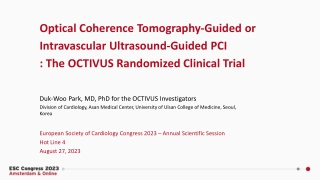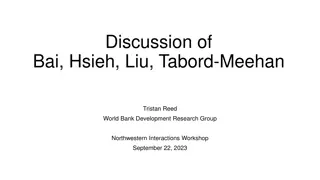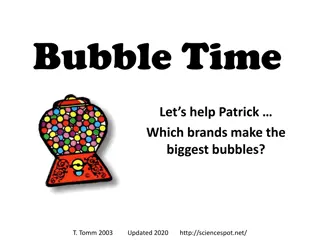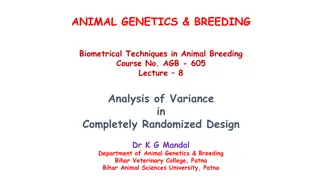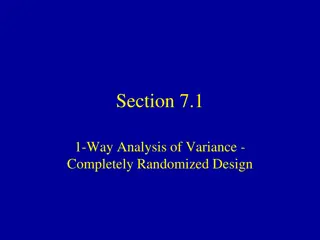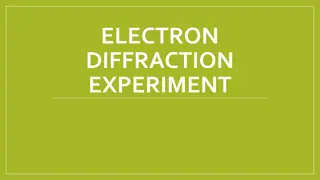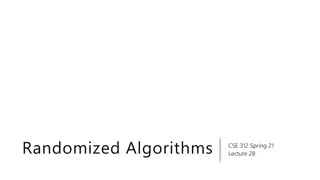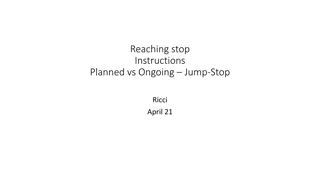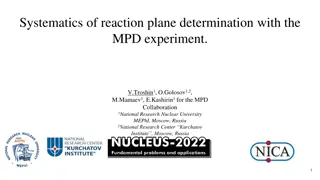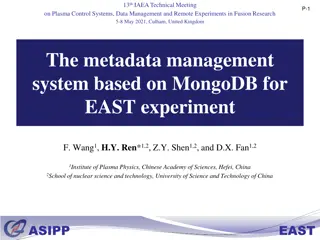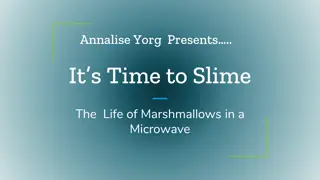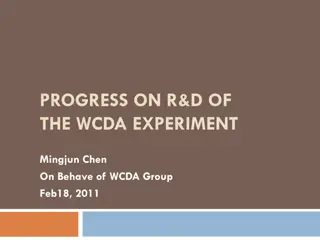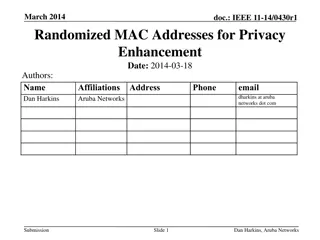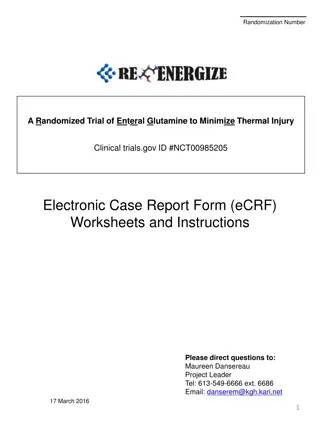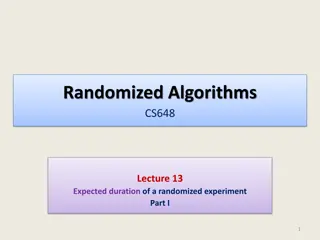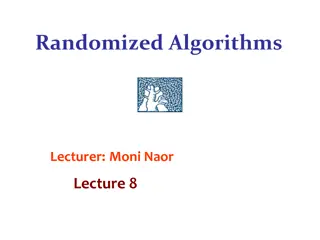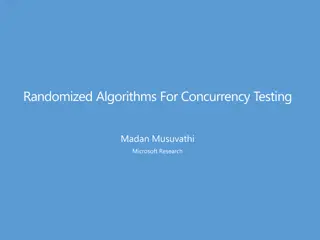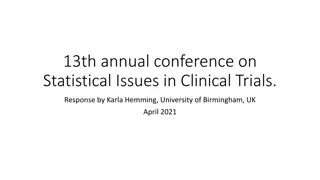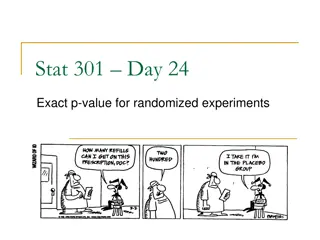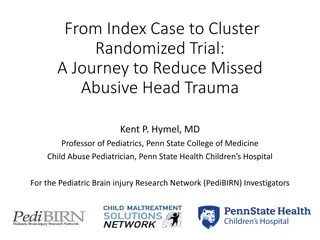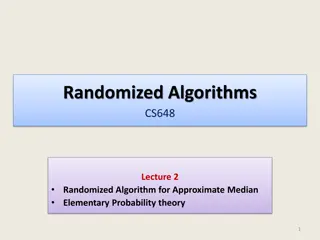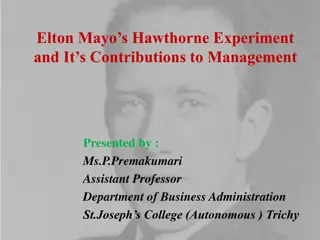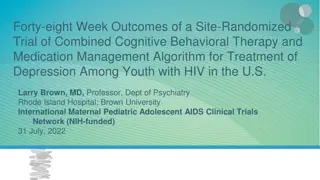OCTIVUS Randomized Clinical Trial: OCT-Guided vs IVUS-Guided PCI
The OCTIVUS Randomized Clinical Trial compared the clinical efficacy and safety of Optical Coherence Tomography (OCT)-guided and Intravascular Ultrasound (IVUS)-guided strategies in patients undergoing PCI for significant CAD. The study aimed to determine if OCT-guided PCI is noninferior to IVUS-gui
8 views • 27 slides
Multimat-2 Experiment: Advancements in HL-LHC Collimator Technologies
The Multimat-2 experiment conducted by Jorge Guardia Valenzuela and the team at CERN focused on testing prototypes of HL-LHC collimators, including materials and coatings, to improve the robustness and performance under extreme conditions. The goals included deriving strength models, exploring failu
0 views • 13 slides
Aspirin Assay by Direct Acid-Base Titration Experiment Overview
Exploring the process of assessing aspirin purity through direct acid-base titration using sodium hydroxide as a standard solution. The experiment includes details on aspirin properties, dosage, acidity, decomposition, and metabolism. Key aspects covered include the aim of the experiment, the princi
5 views • 15 slides
Discussion of Randomized Experiments and Experimental Design Challenges
Randomized experiments face statistical power challenges due to rare outcomes and high variance. Stratifying randomization can help control for correlated residual variance based on baseline values of outcomes. Implications for applied economists include addressing attrition and treatment effect het
0 views • 6 slides
Discovering the Best Bubble Gum Brand for Big Bubbles Experiment
Patrick wants to blow the biggest bubbles in Bikini Bottom, and you can help by conducting an experiment to determine which of the four bubble gum brands he should use. Identify variables, control factors, and set up the experiment to test bubble blowing ability, gum brand, technique consistency, an
0 views • 11 slides
Biometrical Techniques in Animal Breeding: Analysis of Variance in Completely Randomized Design
Biometrical techniques in animal breeding involve the use of analysis of variance (ANOVA) to partition total variance into different components attributable to various factors. In completely randomized designs, experimental units are randomly assigned to treatments, ensuring homogeneity. The total n
0 views • 34 slides
Analysis of Variance in Completely Randomized Design
This content covers the analysis of variance in a completely randomized design, focusing on comparing more than two groups with numeric responses. It explains the statistical methods used to compare groups in controlled experiments and observational studies. The content includes information on 1-way
0 views • 48 slides
Understanding Randomized Hill Climbing Algorithm for Challenging Problem Solving
Randomized Hill Climbing is a versatile approach to solving complex problems by sampling points in the neighborhood of the current best solution. This method is easy to apply, resource-efficient, and usually fast. However, defining the neighborhood and choosing appropriate parameters can pose challe
4 views • 14 slides
Exploring Wave-Particle Duality in Electron Diffraction Experiment
Delve into the fascinating world of wave-particle duality through an electron diffraction experiment that reveals the dual nature of particles and waves. By investigating the wave characteristics of electrons and measuring their De Broglie wavelength, this experiment sheds light on the fundamental p
1 views • 12 slides
ACST-2 Trial: Stenting vs. Surgery for Carotid Artery Stenosis
ACST-2 is a randomized trial comparing carotid artery stenting (CAS) versus carotid artery surgery (CEA) in asymptomatic patients with severe carotid stenosis. The trial, published in The Lancet in August 2021, involved 3625 patients. While surgery has been shown to reduce stroke rates, modern medic
0 views • 19 slides
Low-Dose Tricyclic Antidepressants (TCA) for IBS: ATLANTIS Study Overview
The ATLANTIS study evaluated the efficacy of low-dose amitriptyline (10-30 mg) in improving Irritable Bowel Syndrome (IBS) symptoms compared to placebo in a 6-month randomized controlled trial in a primary care setting. This important research aims to address the lack of definitive treatment guideli
0 views • 12 slides
Understanding Randomized Algorithms: Types and Examples
Explore the world of randomized algorithms through types like Las Vegas and Monte Carlo, with a focus on classic examples such as Quick Sort. Learn how randomness plays a crucial role in computation and discover the principles behind these algorithms. Dive into the applications of randomized algorit
0 views • 22 slides
Understanding Randomized Algorithms: A Deep Dive into Las Vegas and Monte Carlo Algorithms
Randomized algorithms incorporate randomness into computations, with Las Vegas algorithms always providing the correct answer but varying in time, while Monte Carlo algorithms occasionally give wrong answers. Quick Sort is a classic Las Vegas algorithm that involves pivoting elements for sorting. Ch
4 views • 21 slides
Mouse Cursor Movement Experiment Overview
The experiment involves moving the mouse cursor to different targets on the screen in three phases: Practice pt. 1, Practice pt. 2, and Main experiment. Participants need to ensure a comfortable setup and proper mouse settings for optimal performance. Detailed instructions and setup requirements are
0 views • 23 slides
Understanding DAQ Trigger Issues in SoLID Experiment
Explore DAQ trigger challenges faced in the SoLID experiment through examples, including trigger goals, data readout specifics, and experiment setups. Learn about managing high luminosity, reducing data rates, improving signal quality, and handling bottleneck issues for effective data acquisition. D
0 views • 22 slides
Workshop on Neutron Electric Dipole Moment: Theory to Experiment
Workshop on Neutron Electric Dipole Moment: Theory to Experiment will be held in Trento from August 1st to August 5th, 2022. The event aims to bridge the gap between theory and experiment in investigating the neutron EDM in Lattice QCD, Phenomenology, and Cosmology. Renowned speakers and financial s
1 views • 10 slides
Systematics of Reaction Plane Determination with MPD Experiment
An investigation into the anisotropic transverse flow in heavy-ion collisions at Nuclotron-NICA energies, focusing on the MPD experiment's capabilities in studying momentum anisotropy and collective expansion effects through sophisticated tracking and particle identification systems. The experiment
0 views • 12 slides
Metadata Management System for Fusion Research Experiment Data
The metadata management system based on MongoDB for the EAST experiment addresses the challenges posed by the increasing size and complexity of experimental data. With a focus on resource organization and user accessibility, this system streamlines data management, enabling quick insights into the v
0 views • 15 slides
Understanding Young's Double-Slit Experiment and Interference Patterns
Thomas Young's double-slit experiment in the late 1700s provided evidence of light behaving as a wave, showcasing interference patterns. This experiment challenged the particle theory of light and supported the wave theory. The interference patterns observed helped scientists grasp the wave nature o
0 views • 27 slides
Marshmallow Slime Experiment: Microwave Time Impact
Exploring the impact of microwave duration on marshmallows for making slime, this experiment tested different times to observe how it affects marshmallow consistency and slime stretchiness. By varying microwave times, from 25 to 35 seconds, the researcher recorded changes in marshmallows and slime a
0 views • 13 slides
Progress on R&D of the WCDA Experiment
This report details the progress of the Water Cerenkov Detector Array (WCDA) experiment conducted by Mingjun Chen on behalf of the WCDA Group. It includes information on the introduction to the experiment, R&D of the Water Cerenkov Detector Unit, measurement of muon events, water quality control, pr
0 views • 47 slides
Overview of Mutual Exclusion and Memory Models in Distributed Systems
Discussion on fast, randomized mutual exclusion techniques by George Giakkoupis and Philipp Woelfel. Exploring asynchronous shared memory systems with atomic operations. Understanding mutual exclusion principles as outlined by Dijkstra in 1965 and measuring time efficiency in critical sections. Delv
2 views • 23 slides
Enhancing Privacy with Randomized MAC Addresses in 802.11 Networks
This presentation discusses the use of randomized MAC addresses as a privacy-enhancing measure in 802.11 networks. Passive observation of MAC addresses poses privacy risks, and the proposal suggests assigning random MAC addresses to portable devices to mitigate tracking risks. By periodically changi
0 views • 10 slides
Electronic Case Report Form (eCRF) for Randomized Trial of Enteral Glutamine to Minimize Thermal Injury
Development of case report form worksheets for data collection in a randomized trial focusing on enteral glutamine use to minimize thermal injury. The document provides detailed instructions for research coordinators on data recording from medical charts to be entered into the electronic data captur
1 views • 61 slides
Expected Duration of a Randomized Experiment: Coupon Collector Problem Analysis
Explore the fascinating Coupon Collector Problem, where distinct coupons are randomly selected from a bag until each has appeared at least once. Dive into the analysis of the expected number of iterations required for all coupons to be collected, shedding light on the gradual transition through disc
0 views • 33 slides
Exploring Buffon's Needle Experiment for Estimating Constants
Buffon's Needle experiment involves dropping sticks on a surface with parallel lines to estimate a mathematical constant. By calculating the probability of the sticks crossing the lines at various distances, comparing results using the Buffon theorem, and determining inaccuracies, the experiment aim
0 views • 16 slides
Buffon's Needle Experiment: Probability Estimation through Sticks Crossing Lines
Buffon's Needle Experiment involves dropping sticks on parallel lines to estimate a mathematical constant through the frequency of the sticks crossing the lines. The experiment explores the theoretical introduction, probability calculations, equipment setup, and hypotheses related to accuracy and pr
0 views • 26 slides
Advanced Encoding Techniques in Randomized Algorithms
Explore innovative approaches in randomized algorithms through techniques such as perfect memory, efficient card guessing strategies, and polynomial encoding methods over finite fields. Learn how to optimize memory usage and enhance predictive capabilities in algorithmic processes.
0 views • 41 slides
Understanding Probabilistic Concurrency Testing for Bug Detection
Explore the concept of probabilistic concurrency testing and how randomized scheduling algorithms can help detect bugs efficiently. Learn about bug depth, randomized algorithms, and the development of PCT to improve the effectiveness of stress testing tools like Cuzz.
0 views • 23 slides
Challenges and Solutions in Concurrency Testing with Randomized Algorithms
Concurrency testing in complex cloud services presents challenges such as bugs, performance problems, and data loss. Randomized algorithms, like Probabilistic Concurrency Testing (PCT), offer effective bug-finding solutions. PCT provides probabilistic guarantees and scalable bug detection for distri
0 views • 37 slides
Investigation on Detection of Food Adulteration in Chemistry
This chemistry investigatory project focuses on detecting food adulteration through various experiments. Experiment-1 aims to detect adulterants in fat, oil, and butter, while Experiment-2 investigates adulteration in sugar. Experiment-3 aims to detect adulterants in chili powder, turmeric powder, a
0 views • 18 slides
Statistical Issues in Clinical Trials: Insights from 13th Annual Conference
The 13th annual conference on Statistical Issues in Clinical Trials covered topics such as penalties for extra variation and limited degrees of freedom, the Diet-Heart Hypothesis, controlled trials, unit of randomization, and causal inference. Speakers highlighted the importance of addressing cluste
0 views • 10 slides
Chia Seed Experiment: Investigating Germination and Growth Factors
Chia seeds are nutritious and versatile crops that can thrive in dry conditions. This experiment aims to explore factors influencing the germination and growth of chia seeds. The hypothesis, procedures, and control groups are detailed to guide the experiment, which involves testing the impact of wat
0 views • 8 slides
Pharaoh's Snake Experiment Procedure and Video Links
This content provides a detailed overview of the Pharaoh's Snake experiment conducted by Karin Grdadolnik and Sara Ferko from Gimnazija Moste. It includes images of the experiment setup, reagents, and procedure. The experiment involved measuring chemicals, using sand, sugar, baking soda, ethanol, an
0 views • 5 slides
Exact P-Value for Randomized Experiments and Quiz/HW Feedback
In this Day 24 session of Stat 301, exact p-values for randomized experiments were calculated in Investigation 3.6 Questions (a) - (f). The completion of both Section 1 and Section 2 of this investigation is noted. Additionally, comments on a quiz or homework assignment were provided.
0 views • 16 slides
A Journey to Reduce Missed Abusive Head Trauma: From Index Case to Cluster Randomized Trial
Abusive head trauma (AHT) is a significant cause of trauma-related death and disability in young children. The journey to address missed cases of AHT began with the index case in 1995, leading to a cluster randomized trial aiming to improve recognition and prevention. The consequences of missed AHT
0 views • 74 slides
Randomized Algorithms for Approximate Median with Elementary Probability
This content covers a lecture on a randomized algorithm for finding an approximate median element using elementary probability theory. It discusses the importance of insight and basic probability in designing and analyzing such algorithms. The lecture presents a simple probability exercise involving
0 views • 25 slides
Understanding Elton Mayo's Hawthorne Experiment and Its Impact on Management
Elton Mayo's Hawthorne Experiment at the Hawthorne Works revealed that emotional factors were more significant than logical factors in influencing productivity. The experiment consisted of four parts: Illumination Experiment, Relay Assembly Test Room Experiment, Mass Interview Programme, and Bank Wi
0 views • 11 slides
Forty-eight-Week Outcomes of a Site-Randomized Trial for Depression Among Youth with HIV
This study explores the outcomes of a site-randomized trial utilizing a combined cognitive behavioral therapy and medication management algorithm for treating depression among youth with HIV in the U.S. The team involved includes medical officers, data managers, statisticians, clinical trial special
0 views • 22 slides
Methods for Quantifying Efficacy-Effectiveness Gap in Randomized Controlled Trials
This research discusses the quantification of the efficacy-effectiveness gap in randomized controlled trials (RCTs), particularly focusing on examples in Acute Respiratory Distress Syndrome (ARDS). It explores the challenges of RCTs, ethical considerations, and the use of observational data for caus
0 views • 8 slides
